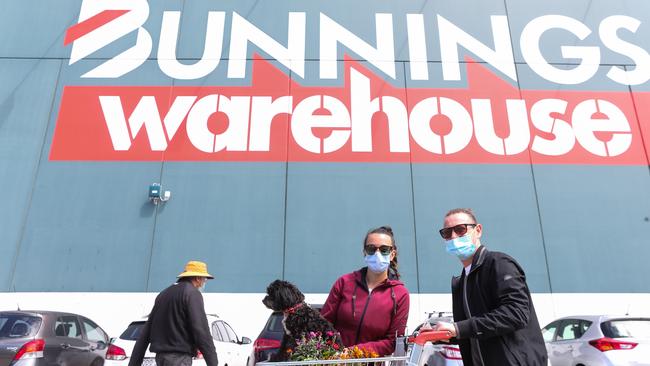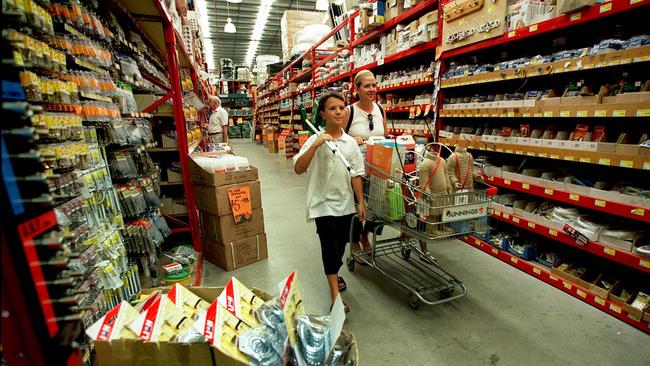Bunnings warns suppliers it will tighten stock levels as supply chains improve
The hardware giant will greatly reduce the stock levels it built up during Covid-19, with niche items to be scrapped from the shelves.

Bunnings will tighten its inventories as pandemic conditions wane, warning suppliers that space on its shelves for lower selling or “niche” items will be affected.
The Wesfarmers-owned hardware giant is one of the first to take a scalpel to stock built this year due to fears factory shutdowns and lockdowns in China would seriously disrupt supply chains.
But with supply chains vastly improved, many retailers are looking to slim down inventories to better match demand.
In a letter to suppliers, Bunnings merchandise director Jen Tucker unveiled the early stages of changes to its inventory management. “With the most disruptive phase of the pandemic-related supply challenges behind us, it’s pleasing to see our in-stock performance continuing to improve,” Ms Tucker wrote.
“With more stock now in stores and our warehouses, we’re continuing to calibrate our inventory management to ensure we have the right stock for customers.”
For Bunnings suppliers it will mean a stronger focus on ensuring the retailer can maintain its low price position while also maintaining the right level of stock to suit changing demand.
“Our focus continues to be on ensuring we have stock that supports our lowest prices position, key seasonal categories and demand from our commercial customers. We will however tighten up the inventory settings of lower turning and niche products,” Ms Tucker wrote. “For some lower turning and niche products we’ll adjust down our holdings per store … to reflect the rate of sale rather than presentation levels.”
She added; “There’ll be more rigour around the approval process for off location and minimum presentation requests. Where requests add too many weeks cover they may be rejected.”

It is believed this last change to Bunnings inventory management relates to the number of products to be displayed at the end of aisles, referred to in her letter as “off location”, and will further tighten the volumes of products in store.
In a statement to The Australian, Ms Tucker said: “There’s no doubt Covid was a disruptive period for all retailers with supply chain challenges and unprecedented levels of demand across different product categories.”
“Now that we are beginning to come out the other side, we are working with our suppliers to ensure we’re managing stock as we always have, in a practical and common sense manner.” she said.
Barrenjoey analyst Tom Kierath said it made sense for Bunnings to finesse its inventory levels to a level more closer to what the business was holding in 2019 before the pandemic hit.
Mr Kierath said it was difficult to gauge inventory levels, but that the retailer should be tweaking its inventory to benefit from the changing sales mix flowing from the end of the worst of the pandemic. “The dynamic here is that all the retail, do-it-yourself products that they sell, the demand for that has been really strong through Covid because people were stuck at home with nothing to do,” Mr Kierath said.
“Now they’re out travelling and so the demand for those products is going to be lower than what it has been in the last couple of years. And you contrast that with trade products that tradies buy, so power equipment and nuts and bolts … that part of the market is still strong because of all the work in the pipelines to be done.
JP Morgan analyst Bryan Raymond said it was typical for companies to hold on to “safety stock” to cover supply in case of disruptions, but with supply chains around the world normalising this might not be required anymore. “Supply chains around the world are normalising … so arguably you don’t need quite as much stock as you did previously,” he said.




To join the conversation, please log in. Don't have an account? Register
Join the conversation, you are commenting as Logout